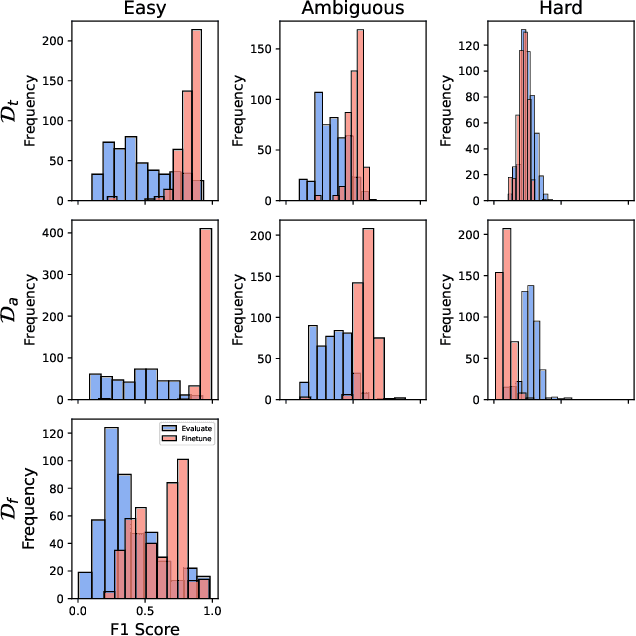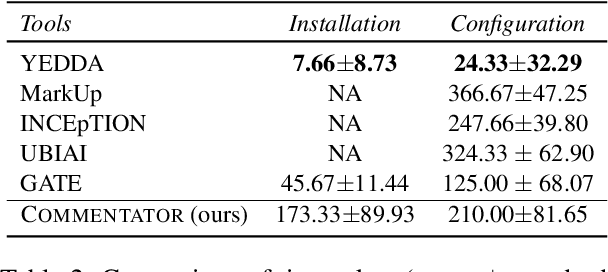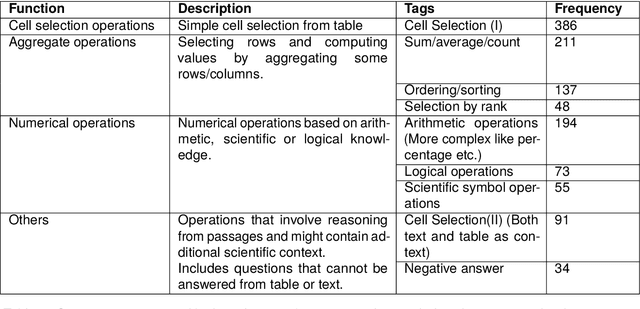Mayank Singh
Indian Institute of Technology Gandhinagar
Beyond Monolingual Assumptions: A Survey of Code-Switched NLP in the Era of Large Language Models
Oct 08, 2025



Abstract:Code-switching (CSW), the alternation of languages and scripts within a single utterance, remains a fundamental challenge for multiling ual NLP, even amidst the rapid advances of large language models (LLMs). Most LLMs still struggle with mixed-language inputs, limited CSW datasets, and evaluation biases, hindering deployment in multilingual societies. This survey provides the first comprehensive analysis of CSW-aware LLM research, reviewing \total{unique_references} studies spanning five research areas, 12 NLP tasks, 30+ datasets, and 80+ languages. We classify recent advances by architecture, training strategy, and evaluation methodology, outlining how LLMs have reshaped CSW modeling and what challenges persist. The paper concludes with a roadmap emphasizing the need for inclusive datasets, fair evaluation, and linguistically grounded models to achieve truly multilingual intelligence. A curated collection of all resources is maintained at https://github.com/lingo-iitgn/awesome-code-mixing/.
Eka-Eval : A Comprehensive Evaluation Framework for Large Language Models in Indian Languages
Jul 02, 2025Abstract:The rapid advancement of Large Language Models (LLMs) has intensified the need for evaluation frameworks that go beyond English centric benchmarks and address the requirements of linguistically diverse regions such as India. We present EKA-EVAL, a unified and production-ready evaluation framework that integrates over 35 benchmarks, including 10 Indic-specific datasets, spanning categories like reasoning, mathematics, tool use, long-context understanding, and reading comprehension. Compared to existing Indian language evaluation tools, EKA-EVAL offers broader benchmark coverage, with built-in support for distributed inference, quantization, and multi-GPU usage. Our systematic comparison positions EKA-EVAL as the first end-to-end, extensible evaluation suite tailored for both global and Indic LLMs, significantly lowering the barrier to multilingual benchmarking. The framework is open-source and publicly available at https://github.com/lingo-iitgn/ eka-eval and a part of ongoing EKA initiative (https://eka.soket.ai), which aims to scale up to over 100 benchmarks and establish a robust, multilingual evaluation ecosystem for LLMs.
UNITYAI-GUARD: Pioneering Toxicity Detection Across Low-Resource Indian Languages
Mar 29, 2025Abstract:This work introduces UnityAI-Guard, a framework for binary toxicity classification targeting low-resource Indian languages. While existing systems predominantly cater to high-resource languages, UnityAI-Guard addresses this critical gap by developing state-of-the-art models for identifying toxic content across diverse Brahmic/Indic scripts. Our approach achieves an impressive average F1-score of 84.23% across seven languages, leveraging a dataset of 888k training instances and 35k manually verified test instances. By advancing multilingual content moderation for linguistically diverse regions, UnityAI-Guard also provides public API access to foster broader adoption and application.
COMI-LINGUA: Expert Annotated Large-Scale Dataset for Multitask NLP in Hindi-English Code-Mixing
Mar 27, 2025Abstract:The rapid growth of digital communication has driven the widespread use of code-mixing, particularly Hindi-English, in multilingual communities. Existing datasets often focus on romanized text, have limited scope, or rely on synthetic data, which fails to capture realworld language nuances. Human annotations are crucial for assessing the naturalness and acceptability of code-mixed text. To address these challenges, We introduce COMI-LINGUA, the largest manually annotated dataset for code-mixed text, comprising 100,970 instances evaluated by three expert annotators in both Devanagari and Roman scripts. The dataset supports five fundamental NLP tasks: Language Identification, Matrix Language Identification, Part-of-Speech Tagging, Named Entity Recognition, and Translation. We evaluate LLMs on these tasks using COMILINGUA, revealing limitations in current multilingual modeling strategies and emphasizing the need for improved code-mixed text processing capabilities. COMI-LINGUA is publically availabe at: https://huggingface.co/datasets/LingoIITGN/COMI-LINGUA.
Model Hubs and Beyond: Analyzing Model Popularity, Performance, and Documentation
Mar 19, 2025



Abstract:With the massive surge in ML models on platforms like Hugging Face, users often lose track and struggle to choose the best model for their downstream tasks, frequently relying on model popularity indicated by download counts, likes, or recency. We investigate whether this popularity aligns with actual model performance and how the comprehensiveness of model documentation correlates with both popularity and performance. In our study, we evaluated a comprehensive set of 500 Sentiment Analysis models on Hugging Face. This evaluation involved massive annotation efforts, with human annotators completing nearly 80,000 annotations, alongside extensive model training and evaluation. Our findings reveal that model popularity does not necessarily correlate with performance. Additionally, we identify critical inconsistencies in model card reporting: approximately 80\% of the models analyzed lack detailed information about the model, training, and evaluation processes. Furthermore, about 88\% of model authors overstate their models' performance in the model cards. Based on our findings, we provide a checklist of guidelines for users to choose good models for downstream tasks.
Leveraging Retrieval Augmented Generative LLMs For Automated Metadata Description Generation to Enhance Data Catalogs
Mar 12, 2025



Abstract:Data catalogs serve as repositories for organizing and accessing diverse collection of data assets, but their effectiveness hinges on the ease with which business users can look-up relevant content. Unfortunately, many data catalogs within organizations suffer from limited searchability due to inadequate metadata like asset descriptions. Hence, there is a need of content generation solution to enrich and curate metadata in a scalable way. This paper explores the challenges associated with metadata creation and proposes a unique prompt enrichment idea of leveraging existing metadata content using retrieval based few-shot technique tied with generative large language models (LLM). The literature also considers finetuning an LLM on existing content and studies the behavior of few-shot pretrained LLM (Llama, GPT3.5) vis-\`a-vis few-shot finetuned LLM (Llama2-7b) by evaluating their performance based on accuracy, factual grounding, and toxicity. Our preliminary results exhibit more than 80% Rouge-1 F1 for the generated content. This implied 87%- 88% of instances accepted as is or curated with minor edits by data stewards. By automatically generating descriptions for tables and columns in most accurate way, the research attempts to provide an overall framework for enterprises to effectively scale metadata curation and enrich its data catalog thereby vastly improving the data catalog searchability and overall usability.
Char-mander Use mBackdoor! A Study of Cross-lingual Backdoor Attacks in Multilingual LLMs
Feb 24, 2025



Abstract:We explore Cross-lingual Backdoor ATtacks (X-BAT) in multilingual Large Language Models (mLLMs), revealing how backdoors inserted in one language can automatically transfer to others through shared embedding spaces. Using toxicity classification as a case study, we demonstrate that attackers can compromise multilingual systems by poisoning data in a single language, with rare tokens serving as specific effective triggers. Our findings expose a critical vulnerability in the fundamental architecture that enables cross-lingual transfer in these models. Our code and data are publicly available at https://github.com/himanshubeniwal/X-BAT.
COMMENTATOR: A Code-mixed Multilingual Text Annotation Framework
Aug 06, 2024



Abstract:As the NLP community increasingly addresses challenges associated with multilingualism, robust annotation tools are essential to handle multilingual datasets efficiently. In this paper, we introduce a code-mixed multilingual text annotation framework, COMMENTATOR, specifically designed for annotating code-mixed text. The tool demonstrates its effectiveness in token-level and sentence-level language annotation tasks for Hinglish text. We perform robust qualitative human-based evaluations to showcase COMMENTATOR led to 5x faster annotations than the best baseline. Our code is publicly available at \url{https://github.com/lingo-iitgn/commentator}. The demonstration video is available at \url{https://bit.ly/commentator_video}.
Measuring Sustainability Intention of ESG Fund Disclosure using Few-Shot Learning
Jul 09, 2024



Abstract:Global sustainable fund universe encompasses open-end funds and exchange-traded funds (ETF) that, by prospectus or other regulatory filings, claim to focus on Environment, Social and Governance (ESG). Challengingly, the claims can only be confirmed by examining the textual disclosures to check if there is presence of intentionality and ESG focus on its investment strategy. Currently, there is no regulation to enforce sustainability in ESG products space. This paper proposes a unique method and system to classify and score the fund prospectuses in the sustainable universe regarding specificity and transparency of language. We aim to employ few-shot learners to identify specific, ambiguous, and generic sustainable investment-related language. Additionally, we construct a ratio metric to determine language score and rating to rank products and quantify sustainability claims for US sustainable universe. As a by-product, we publish manually annotated quality training dataset on Hugging Face (ESG-Prospectus-Clarity-Category under cc-by-nc-sa-4.0) of more than 1K ESG textual statements. The performance of the few-shot finetuning approach is compared with zero-shot models e.g., Llama-13B, GPT 3.5 Turbo etc. We found that prompting large language models are not accurate for domain specific tasks due to misalignment issues. The few-shot finetuning techniques outperform zero-shot models by large margins of more than absolute ~30% in precision, recall and F1 metrics on completely unseen ESG languages (test set). Overall, the paper attempts to establish a systematic and scalable approach to measure and rate sustainability intention quantitatively for sustainable funds using texts in prospectus. Regulatory bodies, investors, and advisors may utilize the findings of this research to reduce cognitive load in investigating or screening of ESG funds which accurately reflects the ESG intention.
How Robust are the Tabular QA Models for Scientific Tables? A Study using Customized Dataset
Mar 30, 2024



Abstract:Question-answering (QA) on hybrid scientific tabular and textual data deals with scientific information, and relies on complex numerical reasoning. In recent years, while tabular QA has seen rapid progress, understanding their robustness on scientific information is lacking due to absence of any benchmark dataset. To investigate the robustness of the existing state-of-the-art QA models on scientific hybrid tabular data, we propose a new dataset, "SciTabQA", consisting of 822 question-answer pairs from scientific tables and their descriptions. With the help of this dataset, we assess the state-of-the-art Tabular QA models based on their ability (i) to use heterogeneous information requiring both structured data (table) and unstructured data (text) and (ii) to perform complex scientific reasoning tasks. In essence, we check the capability of the models to interpret scientific tables and text. Our experiments show that "SciTabQA" is an innovative dataset to study question-answering over scientific heterogeneous data. We benchmark three state-of-the-art Tabular QA models, and find that the best F1 score is only 0.462.
 Add to Chrome
Add to Chrome Add to Firefox
Add to Firefox Add to Edge
Add to Edge